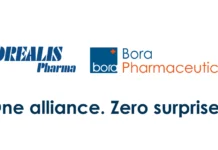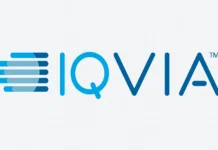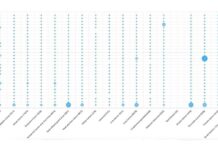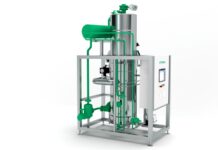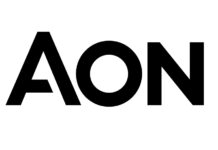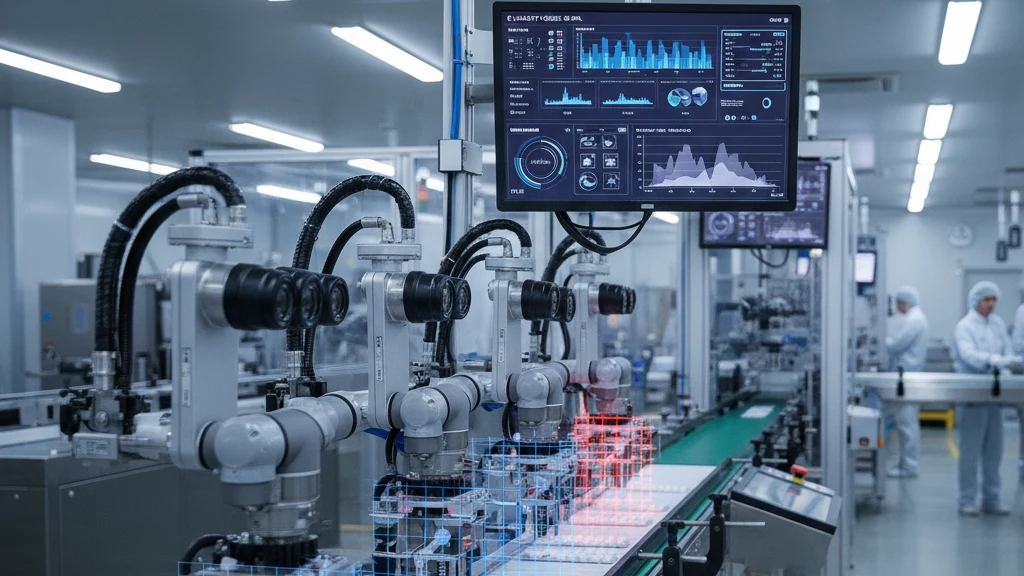AI-Powered Quality Control in Pharmaceutical Packaging
The pharmaceutical industry has witnessed a revolutionary transformation in quality assurance through the implementation of AI in pharmaceutical packaging, fundamentally changing how manufacturers approach defect detection, process optimization, and compliance management. Artificial intelligence technologies have emerged as powerful tools that enhance accuracy, consistency, and efficiency in pharmaceutical packaging operations while ensuring the highest standards of product safety and regulatory compliance.
The Evolution of Quality Control in Pharmaceutical Manufacturing
Traditional pharmaceutical packaging quality control relied heavily on manual inspection processes and basic automated systems that often struggled with the complexity and variability inherent in modern pharmaceutical production. These legacy approaches were limited by human factors such as fatigue, subjectivity, and inconsistent performance, creating potential gaps in quality assurance that could compromise product integrity and patient safety.
The integration of artificial intelligence into pharmaceutical packaging quality control represents a paradigm shift from reactive problem-solving to predictive and prescriptive operations. AI-powered systems analyze vast amounts of production data in real-time, identifying patterns and anomalies that might be invisible to human inspectors or traditional automated systems, enabling proactive intervention before quality issues develop into significant problems.
Contemporary pharmaceutical manufacturing facilities increasingly rely on machine learning algorithms and computer vision systems that continuously improve their performance through exposure to production data. These systems learn to recognize subtle variations in packaging quality that might indicate equipment problems, material issues, or process deviations, providing unprecedented levels of quality assurance accuracy and consistency.
Advanced Computer Vision Systems Revolutionizing Visual Inspection
Computer vision technology powered by deep learning algorithms has transformed visual inspection capabilities in pharmaceutical packaging, enabling detection of defects and anomalies with accuracy levels that exceed human visual inspection. These systems utilize high-resolution cameras and sophisticated image processing algorithms to analyze packaging characteristics such as seal integrity, label placement, product fill levels, and container closure quality.
Convolutional neural networks specifically designed for pharmaceutical applications can identify cosmetic defects, dimensional variations, and contamination issues with remarkable precision. These systems are trained on extensive datasets of pharmaceutical packaging images, enabling them to distinguish between acceptable variations and quality defects that require intervention or product rejection.
Real-time defect detection through AI-powered vision systems enables immediate response to quality issues, preventing the production of non-conforming products while minimizing material waste and production disruptions. These systems can process thousands of packages per minute while maintaining consistent accuracy levels that surpass traditional inspection methods.
Automated classification of defects enables sophisticated quality management systems that can categorize problems by type, severity, and root cause, supporting continuous improvement initiatives and regulatory compliance requirements. This classification capability provides valuable insights into production performance trends and equipment maintenance needs that optimize overall manufacturing effectiveness.
Machine Learning Applications in Process Optimization
Machine learning algorithms applied to pharmaceutical packaging operations enable predictive analytics that anticipate equipment failures, process deviations, and quality issues before they impact production. These systems analyze historical production data, environmental conditions, and equipment performance parameters to identify patterns that precede quality problems or equipment malfunctions.
Predictive maintenance capabilities powered by machine learning algorithms monitor equipment condition indicators such as vibration patterns, temperature profiles, and energy consumption to predict when maintenance activities will be required. This proactive approach reduces unplanned downtime while optimizing maintenance schedules and extending equipment lifecycle.
Process parameter optimization through AI analysis enables continuous refinement of packaging operations that improve quality outcomes while maximizing production efficiency. These systems can identify optimal settings for temperature, pressure, speed, and other critical parameters that affect packaging quality and throughput.
Statistical process control enhanced by machine learning algorithms provides dynamic control limits that adapt to process variations while maintaining quality standards. These adaptive systems can distinguish between normal process variation and significant deviations that require corrective action, reducing false alarms while ensuring appropriate response to genuine quality issues.
Integration with Manufacturing Execution Systems
AI-powered quality control systems integrate seamlessly with manufacturing execution systems to provide comprehensive production management capabilities that enhance visibility, control, and documentation throughout pharmaceutical packaging operations. This integration enables real-time decision-making that optimizes production scheduling while ensuring quality standards are maintained.
Automated documentation and reporting capabilities reduce administrative burden while ensuring comprehensive record-keeping that supports regulatory compliance requirements. AI systems can generate detailed quality reports that include statistical analysis, trend identification, and root cause analysis that support continuous improvement initiatives.
Batch genealogy and traceability enhanced through AI integration provide comprehensive records of production activities, quality parameters, and environmental conditions for each batch. These detailed records support regulatory inspections and quality investigations while enabling rapid response to quality issues or product recalls.
Supply chain integration through AI-powered quality systems enables comprehensive tracking of material quality, supplier performance, and incoming component specifications that affect packaging quality outcomes. This integration provides visibility into upstream factors that may influence packaging performance and product integrity.
Automated Inspection Systems for Complex Packaging Formats
Pharmaceutical packaging encompasses diverse formats including blister packs, bottles, vials, syringes, and specialized delivery devices that each present unique inspection challenges. AI-powered systems address these challenges through specialized algorithms and sensor configurations that accommodate the specific requirements of different packaging formats.
Blister pack inspection through AI-powered systems can detect missing tablets, broken pills, incorrect positioning, and packaging defects with accuracy levels exceeding 99.5 percent. These systems utilize advanced object detection algorithms that can identify and classify multiple defect types simultaneously while maintaining high-speed processing capabilities.
Liquid pharmaceutical inspection presents particular challenges related to particle detection, fill level verification, and container integrity assessment. AI-powered vision systems can identify microscopic particles, verify precise fill volumes, and detect container defects that might compromise product safety or efficacy.
Label verification and optical character recognition powered by AI algorithms ensure accurate product identification, batch coding, and regulatory information placement. These systems can verify text legibility, barcode quality, and label positioning while detecting printing errors or missing information that could affect product traceability or patient safety.
Quality Data Analytics and Continuous Improvement
AI-powered quality control systems generate vast amounts of production data that provide unprecedented insights into manufacturing performance, quality trends, and improvement opportunities. Advanced analytics capabilities enable pharmaceutical manufacturers to identify patterns and correlations that inform strategic decisions about process optimization, equipment upgrades, and quality management strategies.
Real-time quality monitoring through AI systems enables immediate response to quality deviations while providing comprehensive data for statistical analysis and trend identification. These capabilities support both immediate corrective actions and long-term improvement initiatives that enhance overall manufacturing effectiveness.
Root cause analysis enhanced by AI algorithms can rapidly identify the underlying factors contributing to quality issues, enabling targeted corrective actions that prevent recurring problems. These analytical capabilities reduce investigation time while improving the effectiveness of corrective and preventive actions.
Performance benchmarking through AI-powered analytics enables pharmaceutical manufacturers to compare quality performance across different production lines, time periods, and operating conditions. This benchmarking capability supports continuous improvement initiatives while identifying best practices that can be implemented across manufacturing operations.
Regulatory Compliance and Validation Requirements
The implementation of AI-powered quality control systems in pharmaceutical manufacturing must comply with stringent regulatory requirements including FDA validation guidelines, EU GMP standards, and international quality management frameworks. These requirements mandate comprehensive documentation, validation testing, and ongoing monitoring that demonstrate system reliability and accuracy.
Validation protocols for AI-powered quality systems must demonstrate consistent performance across diverse operating conditions while maintaining accuracy levels that meet pharmaceutical quality standards. These protocols typically include extensive testing with known defects, statistical analysis of performance data, and comparison with traditional inspection methods.
Data integrity requirements mandate that AI-powered quality systems maintain complete and accurate records of inspection results, system performance, and any modifications or updates to algorithms or system configurations. These requirements ensure that quality data remains reliable and auditable throughout the system lifecycle.
Change control procedures for AI-powered systems must address algorithm updates, system modifications, and performance optimization activities while maintaining regulatory compliance. These procedures ensure that system changes are properly evaluated, documented, and approved before implementation.
Economic Impact and Return on Investment
The implementation of AI-powered quality control systems requires significant initial investment in technology infrastructure, system integration, and staff training, but provides substantial return on investment through reduced quality costs, improved operational efficiency, and enhanced regulatory compliance capabilities.
Quality cost reductions through AI-powered inspection systems typically include decreased product rejections, reduced rework requirements, and minimized risk of quality-related recalls. These cost savings often exceed system implementation costs within the first year of operation while providing ongoing benefits throughout the system lifecycle.
Operational efficiency improvements through AI-powered quality control include increased inspection speed, reduced labor requirements, and enhanced production capacity utilization. These efficiency gains enable pharmaceutical manufacturers to increase production output while maintaining or improving quality standards.
Risk mitigation benefits include reduced liability exposure from quality issues, improved customer satisfaction through consistent product quality, and enhanced brand reputation through demonstrated commitment to excellence. These intangible benefits contribute significantly to long-term business value and competitive advantage.
Future Developments and Emerging Technologies
The future of AI-powered pharmaceutical packaging quality control will be shaped by continued advances in machine learning algorithms, sensor technologies, and computational capabilities that enable even more sophisticated inspection and analysis capabilities. Emerging technologies such as edge computing and 5G communications will enable real-time AI processing at the point of inspection while maintaining connectivity with central monitoring and control systems.
Deep learning algorithm advancement will enable more sophisticated defect detection and classification capabilities that can identify subtle quality variations and predict potential issues before they become apparent through traditional inspection methods. These advanced algorithms will continue to improve through exposure to production data while maintaining consistency and reliability.
Integration with Internet of Things sensors and edge computing capabilities will enable distributed AI processing that reduces latency while providing real-time quality feedback and control capabilities. These technological advances will support more responsive quality management systems that can adapt to changing conditions immediately.
Augmented reality integration with AI-powered quality systems will provide enhanced human-machine interfaces that support quality management decisions while maintaining the efficiency and accuracy advantages of automated systems. These hybrid approaches will combine the pattern recognition capabilities of AI with human judgment and experience in complex quality situations.
Conclusion: Transforming Pharmaceutical Quality Assurance
AI-powered quality control systems represent a fundamental transformation in pharmaceutical packaging quality assurance, providing unprecedented capabilities for defect detection, process optimization, and regulatory compliance management. As these technologies continue to evolve and mature, pharmaceutical manufacturers that embrace AI-powered quality systems will achieve significant competitive advantages through improved product quality, reduced costs, and enhanced operational efficiency.
The successful implementation of AI-powered quality control requires comprehensive planning, stakeholder engagement, and change management that addresses both technical and organizational challenges. Through careful implementation and continuous optimization, these systems provide the foundation for reliable, efficient, and compliant pharmaceutical packaging operations that serve patients worldwide while supporting the industry’s commitment to therapeutic excellence and safety.





